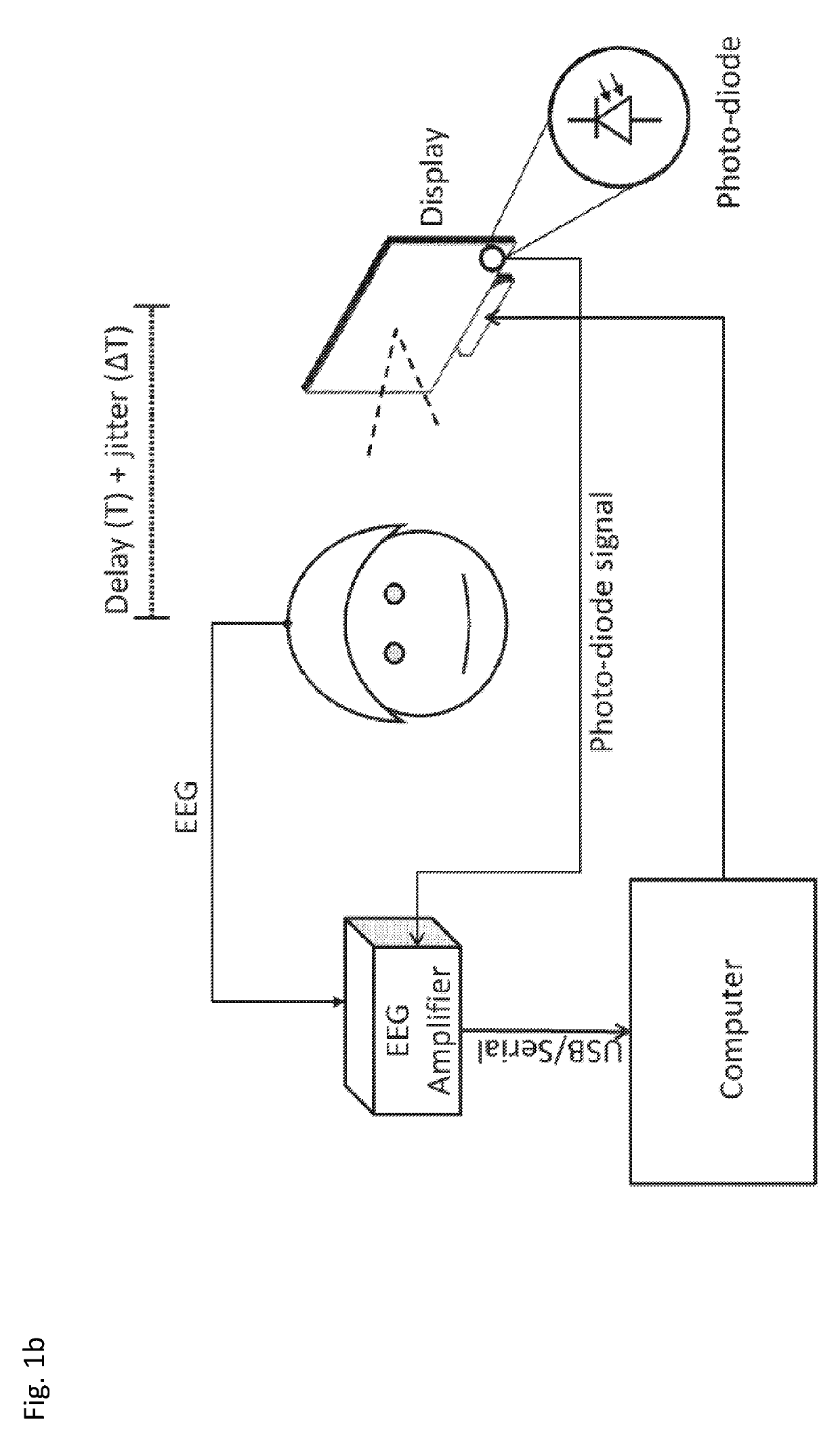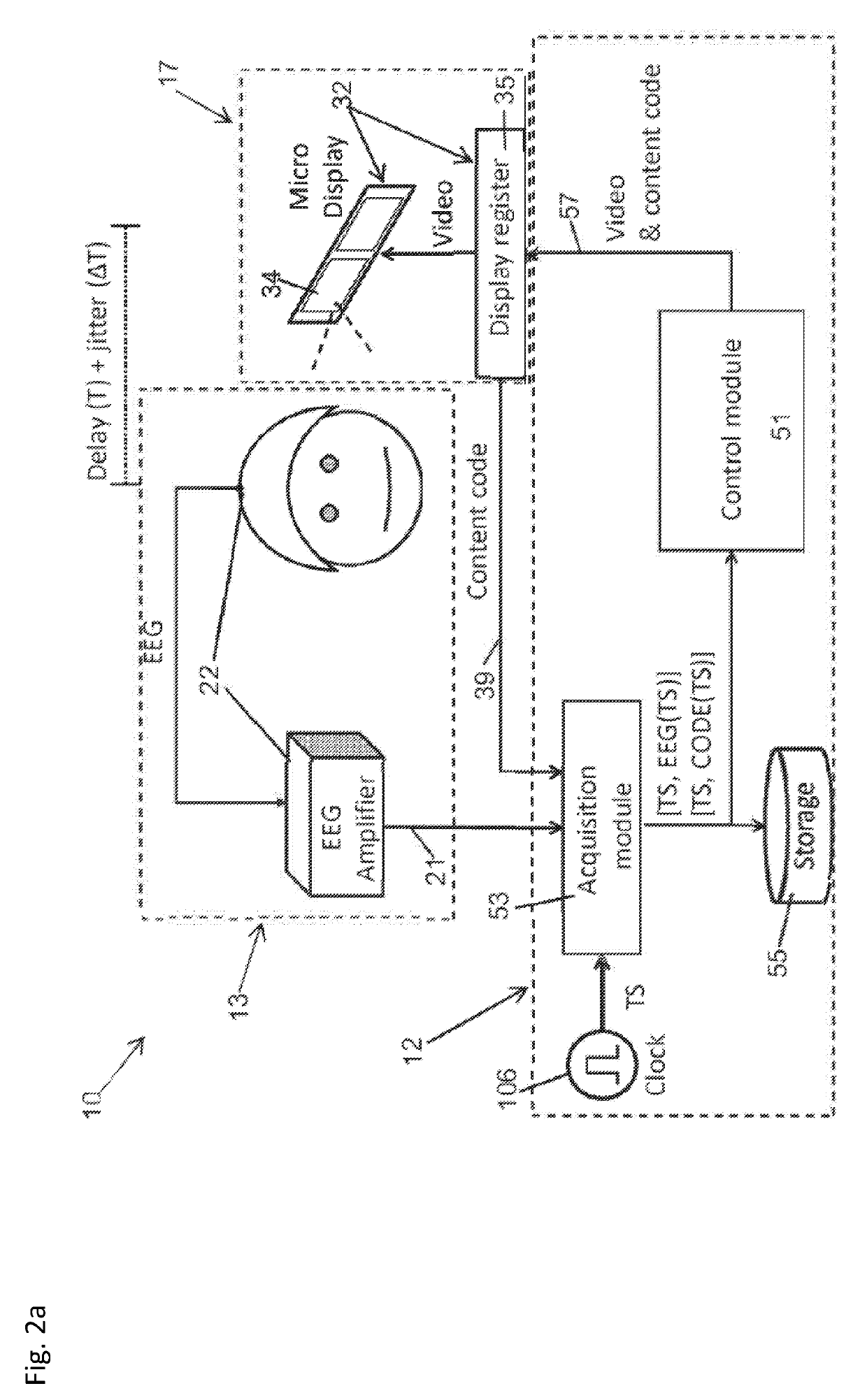System and method for synchronized neural marketing in a virtual environment
a neural marketing and virtual environment technology, applied in the field of system and method for synchronized neural marketing in a virtual environment, can solve the problems of inability to directly monitor a particular area of the brain, user is not fully immersed in the virtual environment, and cannot reliably nor accurately control, etc., to achieve convenient use, reduce electrical interference, and be portable
- Summary
- Abstract
- Description
- Claims
- Application Information
AI Technical Summary
Benefits of technology
Problems solved by technology
Method used
Image
Examples
example 2
ain Computer Interface with Virtual Reality Feedback with Head-Mounted Display, Robotic System, and Functional Electrical Stimulation
[0165]The physical embodiment illustrated in FIG. 9, comprises a wearable system having a head-mounted display (HMD) 18 to display virtual reality 3D video content on micro-displays (e.g., in first-person perspective), a stereo video camera 30, and a depth camera 28, whose data is used for tracking the wearer's own arm, objects, and any second person under the field of view (motion tracking unit). Additionally, the EEG electrodes 22 placed over the head of the wearer 1, EMG electrodes 24 placed on the arm will measure electrical activity of the brain and of muscles respectively, used for inferring user's intention in making a goal directed movement. Additionally, there exists an Inertial Measurement Unit (IMU) 29 that is used for tracking head movements. The executed or intended movements are rendered in the virtual reality display. In case of evidence...
example 3
puter Interface and Motion Data Activated Neural Stimulation with Augmenter Reality Feedback
Objective
[0199]A system that can provide precise neural stimulation in relation to the actions performed by a user in real world, resulting in reinforcement of neural patterns for intended behaviors.
Description
[0200]Actions of the user and that of a second person and objects in the scene are captured with a camera system for behavioral analysis. Additionally, neural data is recorded with one of the modalities (EEG, ECOG, etc.) are synchronized with IMU data. The video captured from the camera system is interleaved with virtual objects to generate 3D augmented reality feedback and provided to the user though head-mounted display. Finally, appropriate neural stimulation parameters are generated in the control system and sent to the neural stimulation.
[0201]Delay and jitter between user's behavioral and physiological measures and neural stimulation should be optimized for effective reinforcement...
example 4
ons to Neural Marketing
[0203]FIG. 15a shows an exemplary, non-limiting schematic block diagram for measuring an effect of visual stimuli on a reaction of an individual in a virtual reality environment. As noted above, a system 1400 is configured so that the sensor or stimulation data samples are attached with the time-stamp defined with the clock module. This means that complete synchronization between what was displayed and the exact reaction of the user is possible, as the data samples are synchronized to the display. As shown, a system 1500 features a plurality of EEG sensors 1502, which are preferably in contact with the scalp of the user as is known in the art, in order to collect EEG signals which are then fed to a signal acquisition module 1504. Signal acquisition module 1504 is optionally and preferably able to acquire signals from other types of physiological sensors as described herein, including EMG, EOG, ECG, inertial, body temperature, galvanic skin, respiration, pulse ...
PUM
 Login to View More
Login to View More Abstract
Description
Claims
Application Information
 Login to View More
Login to View More - Generate Ideas
- Intellectual Property
- Life Sciences
- Materials
- Tech Scout
- Unparalleled Data Quality
- Higher Quality Content
- 60% Fewer Hallucinations
Browse by: Latest US Patents, China's latest patents, Technical Efficacy Thesaurus, Application Domain, Technology Topic, Popular Technical Reports.
© 2025 PatSnap. All rights reserved.Legal|Privacy policy|Modern Slavery Act Transparency Statement|Sitemap|About US| Contact US: help@patsnap.com



